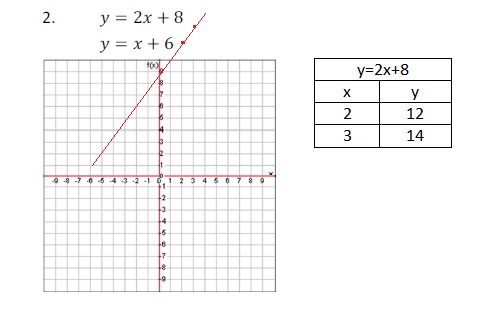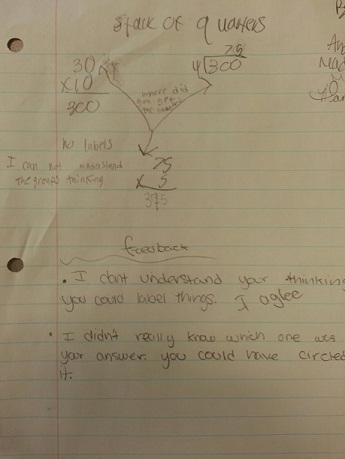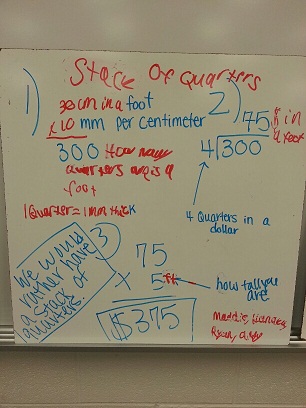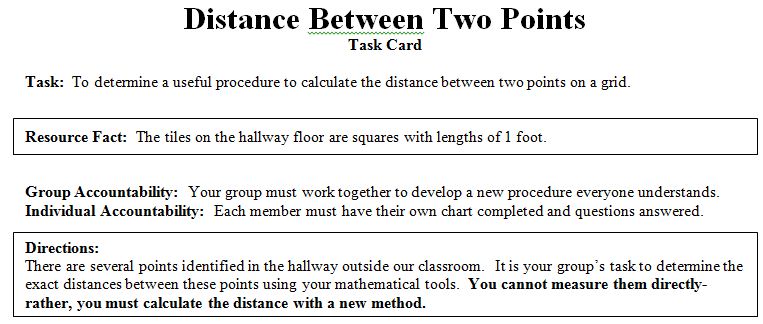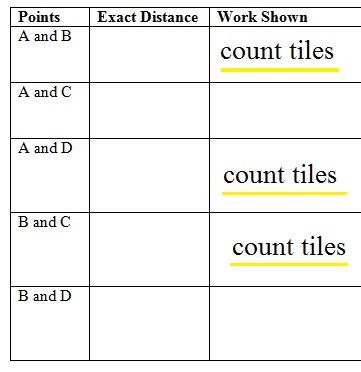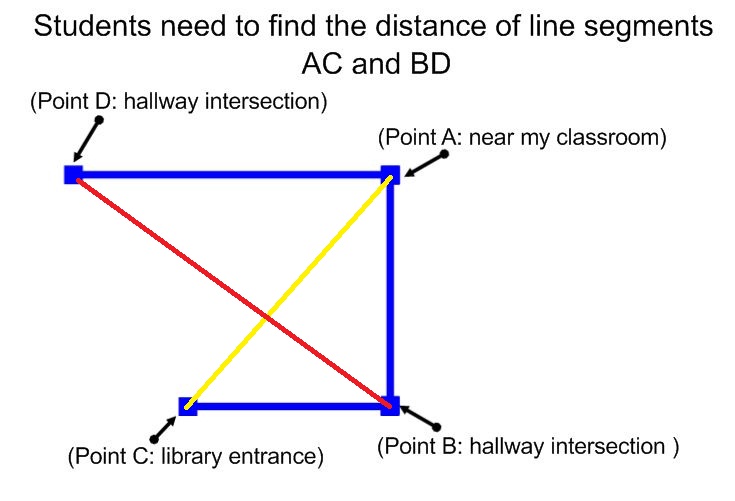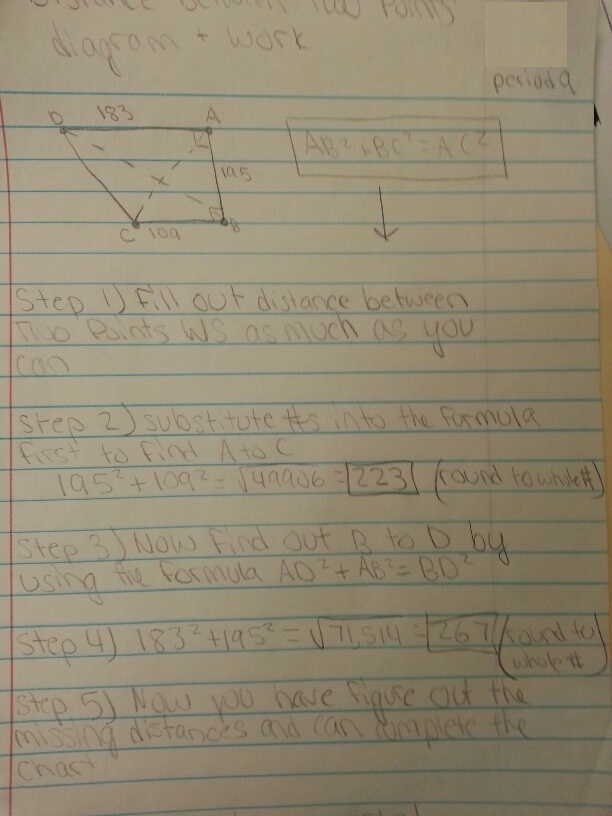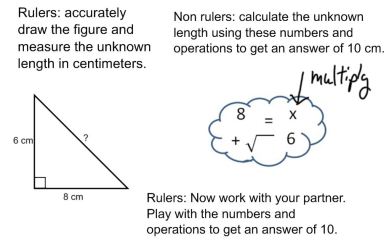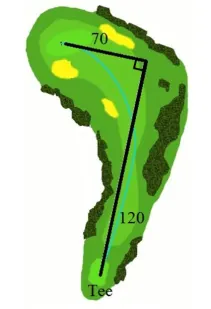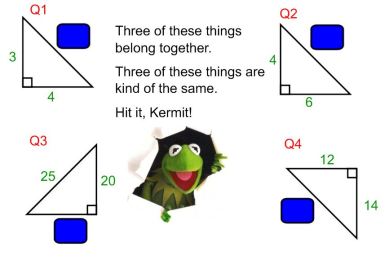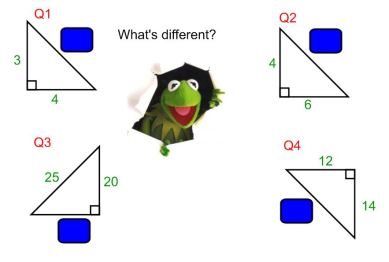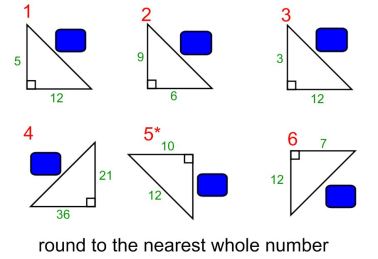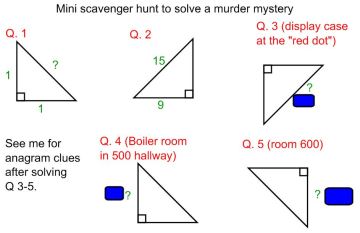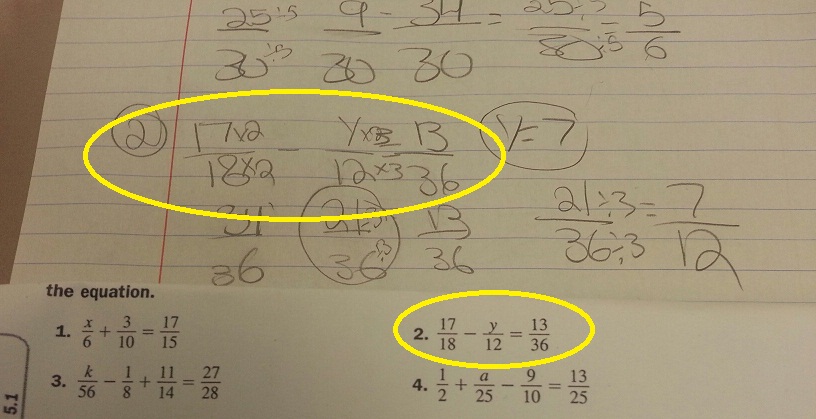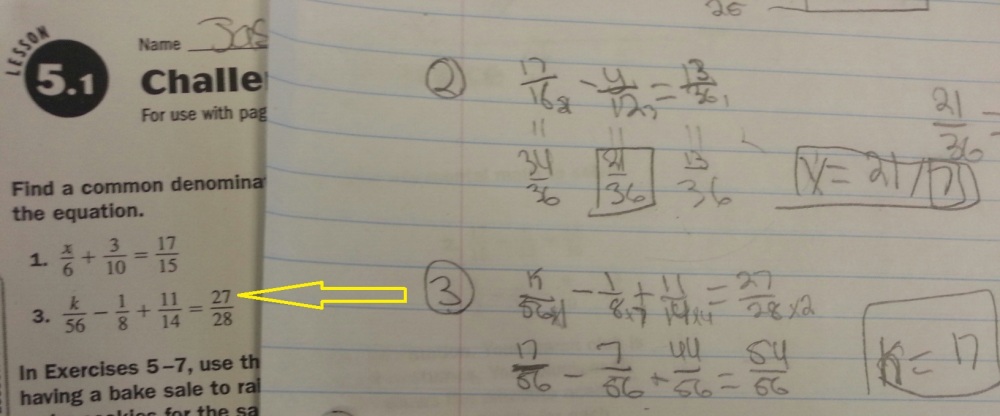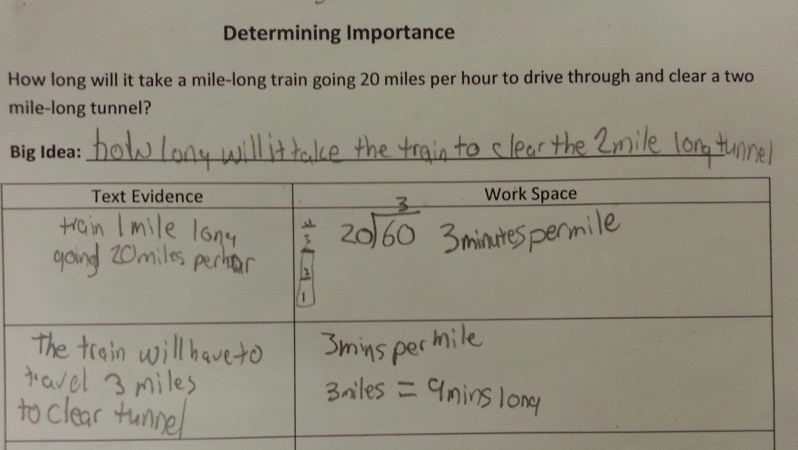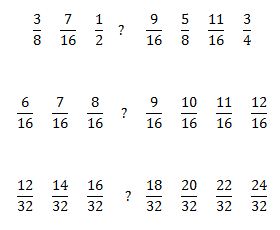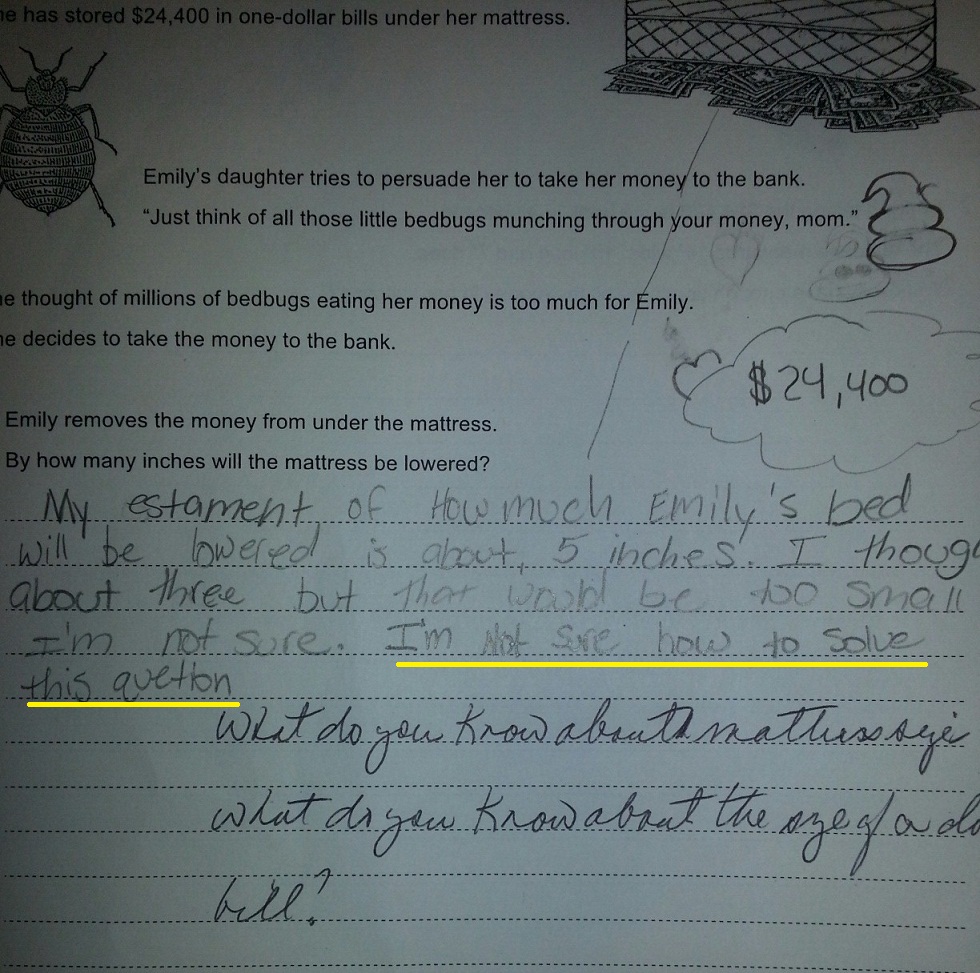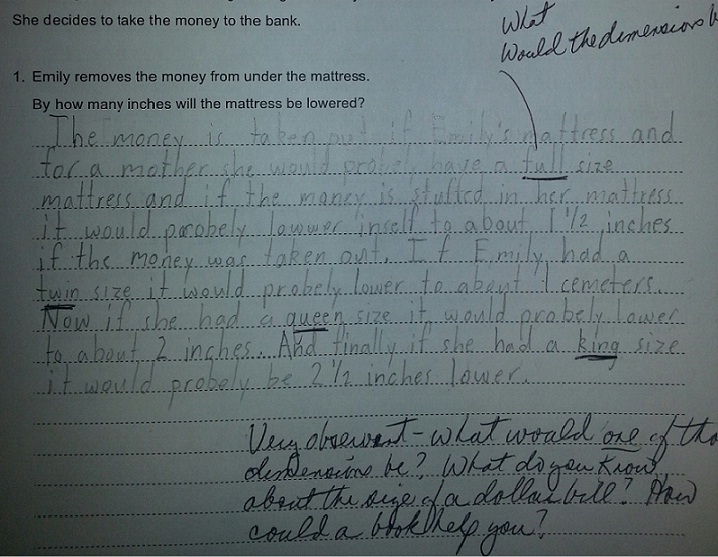Many of my pre-algebra kids continually seek context, so I thought I’d head them off at the pass by introducing graphing systems of equations as an exploratory activity using a couple of word problems. Here’s one of them:
We’ve been graphing linear equations for a while so I purposefully added the “How could graphing each equation help you?” question to guide their thinking.
I came to learn that some students would rather not have the context and just be given the systems to graph–it’s a lot easier. “I hate word problems,” said several students.
That’s my fault. I need to do a better job of applying these skills in context. After we talked about context it was time for some graphing practice. As I checked their work I was reminded that a few haven’t improved their “number sense” when it comes to graphing. I wish I had snapped a photo of one student’s work, but I’ve recreated it below.
My questions to her were: 1) While your table is accurate, why did you choose values that fall outside the graph? 2) How could the slope and graphing the y intercept help you?
This particular student doesn’t recognize how less accurate her lines will be if she picks points beyond the coordinate plane that’s provided. If students are graphing using a table, it’s a great opportunity to discuss when it’s appropriate to choose negative values in order to stay within the graph.
In previous conversations with this student I also know she doesn’t have a strong grasp of the meaning of rate of change. I need to get her into math lab.

